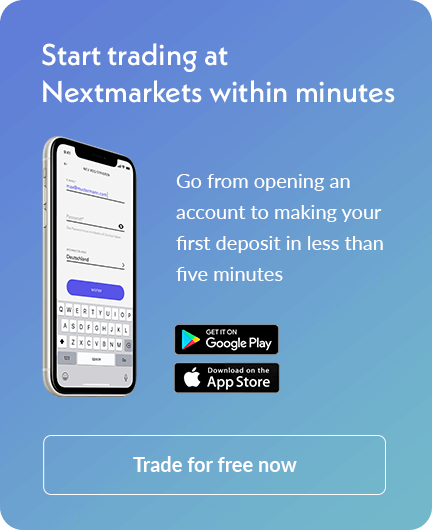What is forex lot size?
Like buying 1kg of butter or a dozen eggs from the local supermarket, anything you purchase or sell is determined by a unit of measurement. The largest and most liquid market in the world is certainly no different. Now you’ve found the right trading platform, it’s time to delve deeper into the world of FX trading.
When placing orders within the forex market, the size of your order is determined by a unit of measurement known as forex lot size. The size of your forex trades will always be made up of lots and understanding lot size is crucial to successfully trading currency pairs on the global forex market.

What is a lot?
Before you start asking yourself, what is lot size or even begin learning how to trade forex, you’re going to need to know what a lot actually is. There are some key units of measurements that you must understand in order to trade forex successfully.
Firstly, a lot is a unit of measurement used to denote the amount of currency units bought or sold in a transaction. Whenever you place an order to trade a position, that order will be quoted in lot sizes.
Forex lot size chart – How many units?
Which brings us to what is a forex lot size – The standard lot size is 100,000 units of a currency but there are others. You may also find mini, micro, and nano lot sizes. A mini lot size is 10,000 units, a micro is 1,000 units, and finally a nano is 100 units. These will all be found in a broker provided lot size chart.
Why would you choose one lot over another? Each lot size holds an advantage.
Nano lot – Very rarely seen in FX trading but it is the most flexible of the lot sizes. Nano lots are useful if you are starting out small and want to test the waters of FX trading.
Micro lot – A micro lot is typically the smallest lot size tradable, as nano lots are so rarely seen. At 1000 units, you can trade on a smaller account which is why micro lofts are often used by novice traders who want to reduce potential losses.
Mini lot – To get the most benefit out of trading as a beginner, it would still be recommended to trade in mini lots. Many advanced traders use mini lots to gain greater control over their forex positions.
Standard lot – Most traders with retail investor accounts won’t ever use this lot size. It feels tempting to trade at this size but one really does need the capital to do so safely. Standard lots are for traders who understand risk management well.
r use this lot size. It feels tempting to trade at this size but one really does need the capital to do so safely. Standard lots are for traders who understand risk management well.
Calculating pips and lots - Considering the pip value
However, since the change in a currency’s value can be so minute, there is another unit of measurement to denote this amount – that is known as a Pip. A pip is a very small percentage of a currency’s value. In fact, a pip is often the last decimal place of a quoted value. For example, if you were to trade EUR/USD and the value moves from 3.2040 to 3.2041, then that 0.1 EUR increase is an increase of one pip.
But what does this mean for lot size? This is how profit can be calculated. If you were to trade GBP/USD at 10,000 units, then you would need to calculate the pip movement against your lot size to determine profit. If GBP/USD was valued at 1.0300 and moved one pip we would calculate as follows:
[(000.1) / (1.0300)] x 1 = 0.00009708 GBP per unit
This means that with a 10,000-unit trade, a one pip change is worth approximately 0.97 GBP. We worked that out by multiplying our lot size by the unit value – 10,000 x 0.00009708 = 0.97. Now you can see the importance of lot size and pip value in forex.
Choosing a lot size - Micro lots and mini lots
From a micro lot to a mini lot, lot size does matter. It is a crucial part of your overall risk management plan. In order to calculate how much you are willing to risk, you must understand what lot size you will be trading with. Your account capital, acceptable risk levels, potential leverage, and target profit all affect how you determine which lot size to trade. A common consideration when choosing a lot size is that most professional traders only risk 1% of their account capital.
What about leverage?
By now you have realised that you don’t require nearly as much capital to start trading forex as you would for some other instruments. This is because forex trading allows for significant leverage.
Leverage is the act of borrowing funds, in most cases from a broker, and increasing your trading position beyond that of your own capital capabilities. Thus, you’ll need to be able to know exactly how to trade forex to the best of your abilities.
As you have learned, this can dramatically increase your profits but also significantly amplify your losses. Using leverage allows you to trade more lots than your account can currently afford and the best forex trading apps will offer leverage. For example, using 100:1 leverage you could trade 100,000 lots of USD/JPY for only $1,000. Leverage may be considered whilst planning risk management in forex.
Money management in forex
There is more than learning forex lots sizes and how to calculate pips, if you want to become a successful forex trader. Money management, in the simplest of terms, is setting self-imposed rules that if followed will assist a trader in managing their money effectively, maximise potential profits, and aid in the incremental growing of their account. Money management is critical to overall risk management in forex.
Trade what you can afford
This is especially important when trading with leverage. Every trader must be prepared to lose – the FX market is far from a guaranteed winner. A new trader should only ever deposit what they can afford to lose and set acceptable maximum losses per month.
If you are to hit that maximum, you should stop trading immediately – this is often unmanageable losses when trying to win back money without strategic planning.
Identify a risk to reward ratio
Firstly, establish how much of your account you are going to risk per trade – this will quantify your risk and make it far easier to manage. Establish a risk to reward ratio. That is, for example, if you were to set a maximum acceptable loss of $200 and your target profit is also $200, you would have a ratio of 1:1. A ratio of 1:4, for example would be $100 risk for a target profit of $400.
A typical risk to reward ratio would be higher than 1:1 since with a higher profit target, you can still profit after the same amount of losses.
Don’t abuse leverage
Leverage is not a toy and trading more forex lots than your account balance can afford is a double-edged sword. Giant profits can just as quickly turn into giant losses when taking at risk with forex brokers. The access to larger positions must be respected and extra care must be taken when trading forex pairs with leverage. Never risk more than you can afford to lose.
Take my money – Withdrawing profits
This might surprise novice traders, but many forex traders do not withdraw their profits often enough. It may seem obvious but many do not take their profits. Rather than spend it on a holiday or put the money back into savings, the money simply remains in their trading account. Now the longer money remains in a trading account, the more likely it is to be traded with and then it can possibly be lost.
How to manage risk in forex?
A trader must beware of the risks of forex trading:
Interest rate risk – The sudden increase or decrease of interest rates can dramatically affect volatility. News events can affect interest rates suddenly and traders may be unprepared to deal with this change. This is where trading the news is important when it comes to currency trades.
Currency risk – There is risk in the currency pair alone. Prices fluctuate, major events affecting a price and the exchange rate can occur on a whim, and this all affects the price of your chosen asset. This is especially true in a market that is traded 24/5, as you may very well be asleep when the market changes.
Leverage risk – Once again, the high risk of using leverage must be stressed. Leverage can magnify both wins and losses. It is too easy for a novice trader to forget the significant margin that they are trading with and need to remember how much capital they are risking.
Liquidity risk – A risk not often spoken about, liquidity risk is the risk that an FX asset cannot be bought or sold fast enough to prevent losses. Despite being the highest liquidity market in the world, there are still periods of low-liquidity that can prevent you from moving your asset.
Our final thoughts
Touching on the preceding paragraph, once the risks are identified, a trader must now learn to understand the FX market to best understand how these risks affect their trades. Traders must then get a firm grasp of leverage, should they choose to use it, and develop a solid trading plan.
Setting a risk to reward ratio will help minimise acceptable losses and enforcing stops and limits will ensure you keep to them.
When trading in the FX market it is important that traders understand what a lot size is in order to successfully buy and sell currency pair positions. A lot size is the unit of measurement used to determine the amount of currency units bought or sold in a transaction.
The lot size and price movement, measured in pips, can be calculated to assess any profits or losses made when exiting a position.
The knowledge of forex lot sizes plays a vital role in developing your overall trading strategy and in the development of a risk management plan, that will aid in your success in the forex market.
Forex lot size FAQ
- What is price action?
- Forex vs Stocks - Which is more profitable?
- Trading the news in forex
- How to trade forex? 2023 Guide for Beginners
- What is forex market?
- Currency trading for beginners
- What is cryptocurrency
- What are ETFs
- Stock market analysis - How to research stocks 2023
- How to short stocks
- How to buy stocks
- What are stocks, shares and equities?




